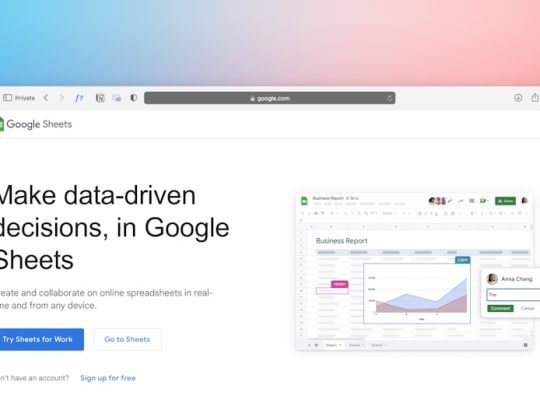In the world of digital marketing, search engine optimization (SEO) has become essential for businesses seeking visibility in competitive industries. For cybersecurity companies, this is particularly critical, as their services are often highly technical and target a narrowly defined audience. Developing a solid SEO keyword strategy tailored to the cybersecurity niche can mean the difference between generating qualified leads and getting lost in a sea of generic content. Three central pillars of this strategy—user intent, content clustering, and optimizing for SERP features—can dramatically improve discoverability and authority.
User Intent: The Foundation of a Cybersecurity Keyword Strategy
Understanding what users truly want when they type queries into Google is the starting point for any keyword strategy. Search intent falls into four general categories:
- Informational: Users looking to learn about a topic, e.g., “What is endpoint protection?”
- Navigational: Users trying to find a specific site or brand, e.g., “CrowdStrike login”
- Commercial Investigation: Users comparing products or services, e.g., “Best firewall for small business”
- Transactional: Users ready to make a purchase or take action, e.g., “buy antivirus for enterprise”
Cybersecurity firms must target keywords aligned with each of these intents. For example, blog posts and glossaries perform well for informational queries, while product pages and comparison articles suit commercial or transactional intent. A key mistake many security vendors make is aiming only for transactional keywords like “cybersecurity software,” ignoring the large search volume and trust-building potential of informational content.
Executing a successful keyword strategy starts with mapping keywords to specific pieces of content based on their intent. This alignment ensures that site visitors get exactly what they’re looking for, reducing bounce rates and increasing conversions over time.

Keyword Clusters: Structuring Content Around Topics
Google and other search engines have evolved beyond simply matching keywords to rank content based purely on phrase repetition. Instead, modern search engines prioritize topical authority. This shift has led to the widespread adoption of keyword clustering strategies.
Keyword clustering groups related keywords and topics to form a coherent content structure. For example, around the core topic “Ransomware Protection,” a security company might build a cluster like this:
- Pillar Page: “Comprehensive Guide to Ransomware Protection”
- Subtopics:
- “How Ransomware Attacks Work”
- “Best Anti-Ransomware Tools for Businesses”
- “Ransomware Statistics You Should Know in 2024”
- “Steps to Recover from a Ransomware Attack”
This strategy serves two key benefits. First, it improves SEO performance by signaling to search algorithms that your site is an authority on a given subject. Second, it improves UX by guiding users through a logical content pathway—from awareness to consideration and ultimately, conversion.
Using keyword research tools, cybersecurity marketers can extract semantically related phrases and form tight, high-value clusters. Tools such as Ahrefs, SEMrush, or Google’s Keyword Planner can help uncover search volume, competition, and intent for potential target phrases.
Leveraging SERP Features for Cybersecurity SEO
Winning a top organic ranking is not the only way to grab attention in Google’s search results anymore. The expanded variety of Search Engine Results Page (SERP) features—such as featured snippets, People Also Ask (PAA) boxes, and knowledge panels—offers new opportunities to increase visibility without needing to be the #1 ranked result.
For cybersecurity brands, targeting these features requires a few strategic optimizations:
1. Featured Snippets
Featured snippets are brief answers pulled directly onto the search results page. These often appear for questions like “What is a zero-day exploit?” or “How does multifactor authentication work?“
To optimize for featured snippets:
- Use concise paragraph and list structures in your content.
- Answer common cybersecurity questions at the beginning of your content sections.
- Use headers like H2 and H3 to improve scannability.

2. People Also Ask
PAA boxes display a list of related questions on various search queries. Ranking in these can drive substantial traffic.
To optimize for PAA:
- Include an FAQ section on your blog or service pages.
- Structure answers in a simple and direct style.
- Use schema markup to reinforce question-answer structures.
3. Video and Image Packs
Cybersecurity may be a deeply technical subject, but visual storytelling is an underused tactic. Creating simple explainer videos or infographics can increase the likelihood of showing up in video carousels and image packs—especially for educational or tutorial content.
Site speed, mobile responsiveness, and structured data also play significant roles in getting content to qualify for rich SERP features. Focusing on these elements ensures your pages are not just informative but also technically optimized for modern SEO performance.
Putting It All Together
Developing a keyword strategy in cybersecurity SEO isn’t about chasing random keywords—it’s about building a consistent, holistic presence around topics that matter to your audience. By focusing on user intent, organizing keywords into clusters, and aiming for valuable SERP features, cybersecurity companies can dominate their niche online.
As cyber threats continue evolving, so too must the marketing strategies of security companies. SEO offers one of the most scalable, sustainable avenues to not only gain visibility but also to educate and build trust with an often skeptical B2B audience. With the right keyword strategy, cybersecurity professionals can ensure they reach the right people at the right time with the right message.
Frequently Asked Questions (FAQ)
- What’s the best way to find keywords for cybersecurity content?
Use tools like SEMrush, Ahrefs, and Google’s Keyword Planner to identify popular search terms. Focus on intent (informational, transactional, etc.), and map keywords to appropriate content types. - What is a keyword cluster?
A keyword cluster is a group of related keywords organized around a central topic. They help structure content and improve topical authority for better SEO performance. - Why is user intent so important in SEO?
Matching content with user intent ensures that searchers find exactly what they’re looking for. This increases engagement, reduces bounce rates, and improves conversions. - Can cybersecurity companies benefit from featured snippets?
Absolutely. By answering common questions directly and clearly, cybersecurity content has a strong chance of being pulled into featured snippets and other SERP features. - How often should keyword strategies be updated?
Ideally, review and update your keyword strategy every 3–6 months. This ensures you’re keeping pace with search trends, algorithm updates, and emerging cybersecurity topics.








